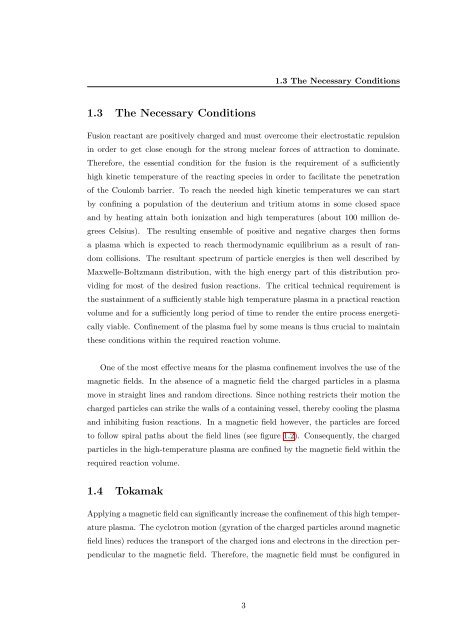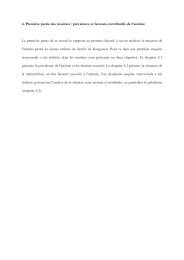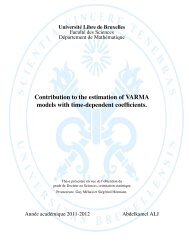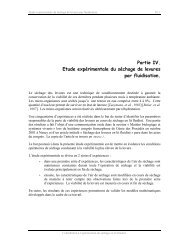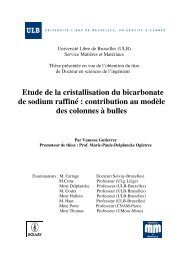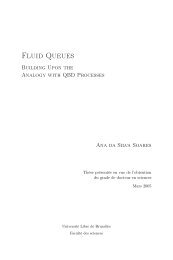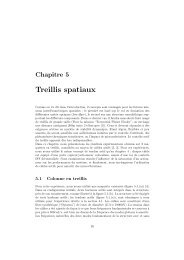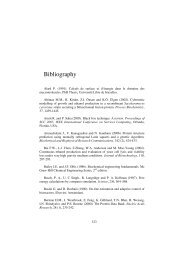PhD and MPhil Thesis Classes - Université Libre de Bruxelles
PhD and MPhil Thesis Classes - Université Libre de Bruxelles
PhD and MPhil Thesis Classes - Université Libre de Bruxelles
Create successful ePaper yourself
Turn your PDF publications into a flip-book with our unique Google optimized e-Paper software.
1.3 The Necessary Conditions1.3 The Necessary ConditionsFusion reactant are positively charged <strong>and</strong> must overcome their electrostatic repulsionin or<strong>de</strong>r to get close enough for the strong nuclear forces of attraction to dominate.Therefore, the essential condition for the fusion is the requirement of a sufficientlyhigh kinetic temperature of the reacting species in or<strong>de</strong>r to facilitate the penetrationof the Coulomb barrier. To reach the nee<strong>de</strong>d high kinetic temperatures we can startby confining a population of the <strong>de</strong>uterium <strong>and</strong> tritium atoms in some closed space<strong>and</strong> by heating attain both ionization <strong>and</strong> high temperatures (about 100 million <strong>de</strong>greesCelsius). The resulting ensemble of positive <strong>and</strong> negative charges then formsa plasma which is expected to reach thermodynamic equilibrium as a result of r<strong>and</strong>omcollisions. The resultant spectrum of particle energies is then well <strong>de</strong>scribed byMaxwelle-Boltzmann distribution, with the high energy part of this distribution providingfor most of the <strong>de</strong>sired fusion reactions. The critical technical requirement isthe sustainment of a sufficiently stable high temperature plasma in a practical reactionvolume <strong>and</strong> for a sufficiently long period of time to ren<strong>de</strong>r the entire process energeticallyviable. Confinement of the plasma fuel by some means is thus crucial to maintainthese conditions within the required reaction volume.One of the most effective means for the plasma confinement involves the use of themagnetic fields. In the absence of a magnetic field the charged particles in a plasmamove in straight lines <strong>and</strong> r<strong>and</strong>om directions. Since nothing restricts their motion thecharged particles can strike the walls of a containing vessel, thereby cooling the plasma<strong>and</strong> inhibiting fusion reactions. In a magnetic field however, the particles are forcedto follow spiral paths about the field lines (see figure 1.2). Consequently, the chargedparticles in the high-temperature plasma are confined by the magnetic field within therequired reaction volume.1.4 TokamakApplying a magnetic field can significantly increase the confinement of this high temperatureplasma. The cyclotron motion (gyration of the charged particles around magneticfield lines) reduces the transport of the charged ions <strong>and</strong> electrons in the direction perpendicularto the magnetic field. Therefore, the magnetic field must be configured in3


